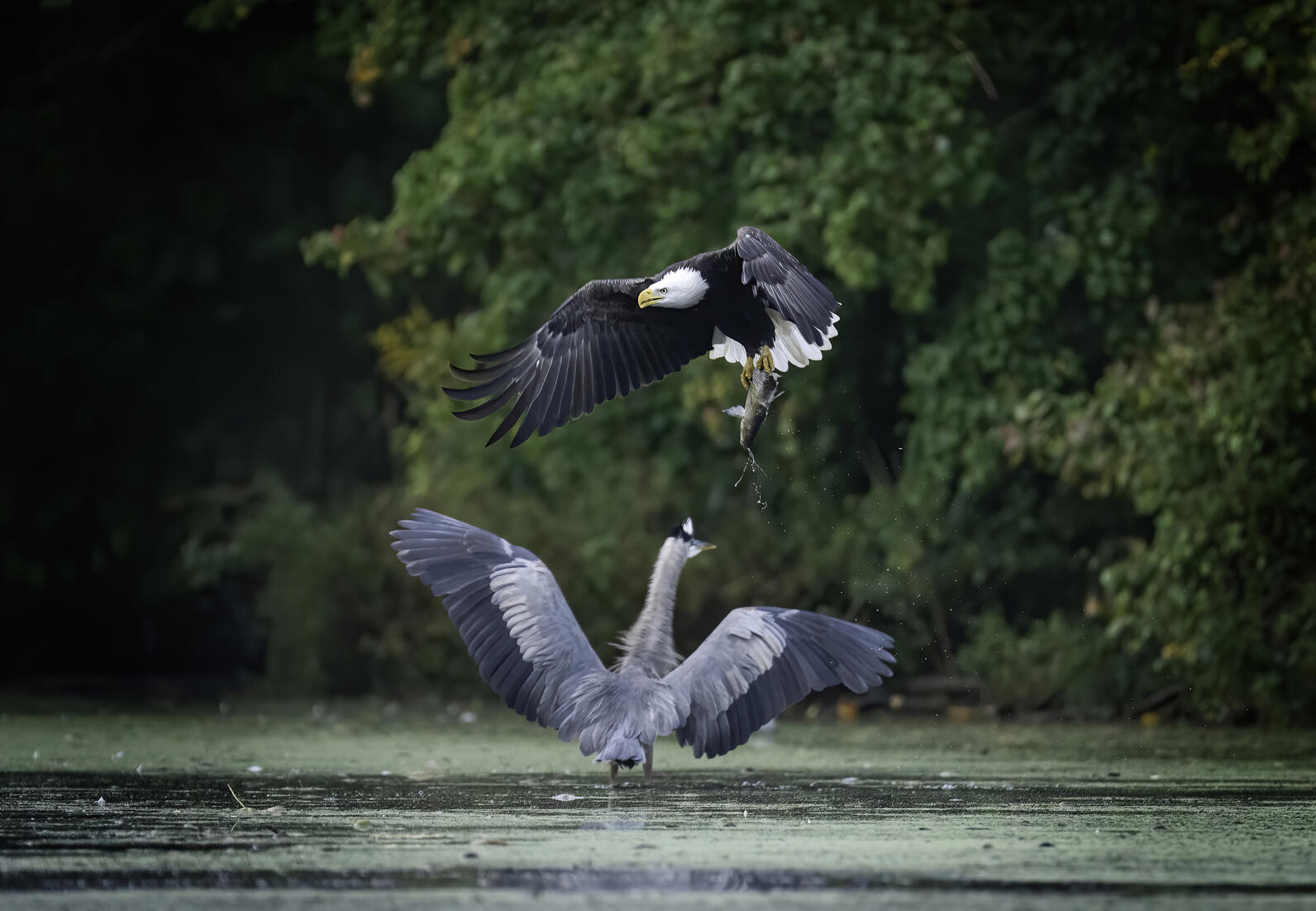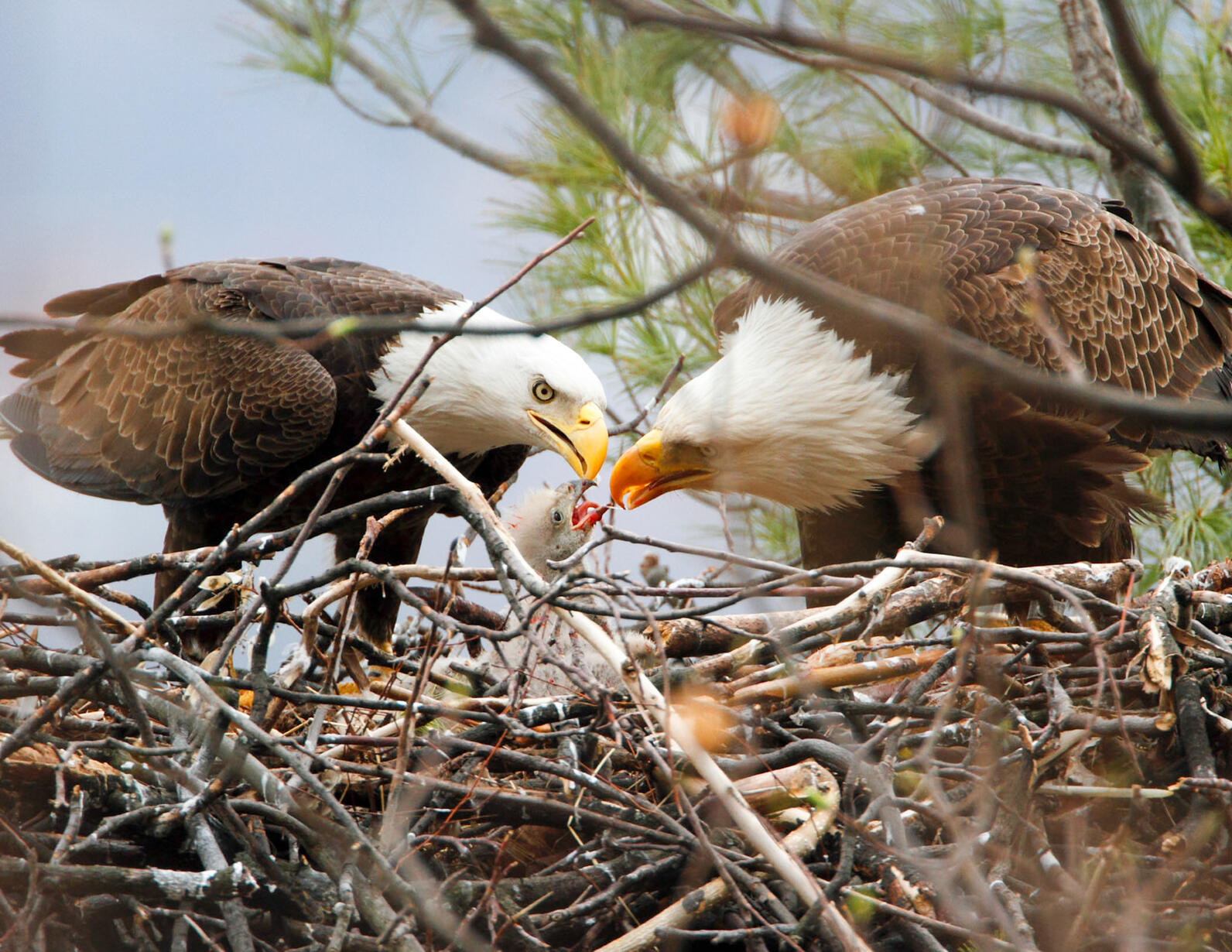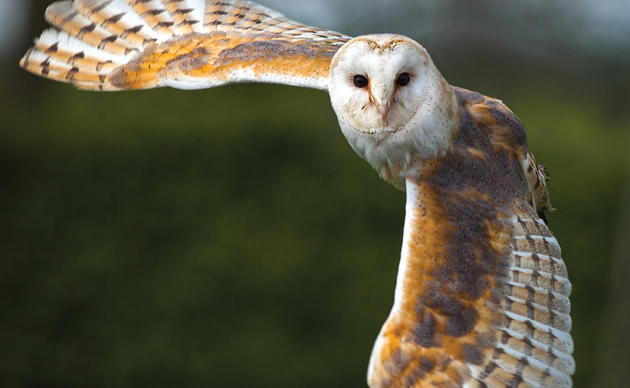Prior to the 1960s, it was rare for Bald Eagles to nest west of Lake Mattamuskeet in North Carolina. Today, numerous pairs occupy freshwater lakes across the state, including prominent populations at Jordan Lake and other bodies of water near major urban areas.
The Bald Eagle has had an interesting conservation history in North Carolina and beyond, full of ups and downs. It was first heralded as the U.S. national symbol in the late 1700s. But it wasn’t until Christmas Eve, 2024, that the Bald Eagle was officially named our national bird. As nesting season kickoffs for these early-season breeders, get up-to-speed on the Bald Eagles ecology and cultural history.
National Icon
Their iconic white-feathered heads and large stature are a much beloved quality among admirers of this large raptor. But other attributes have been less well received. Benjamin Franklin himself was known to comment on their opportunistic habit of stealing food from Ospreys and other smaller birds.
You've probably also seen them depicted in movies soaring across a mountain range or battlefield with a cry that pierces the air. But more often than not, the sound used in cinema is actually that of a Red-tailed Hawk, a call much fiercer than the high-pitched piping of a Bald Eagle.
Beyond their cultural and historical significance in the United States, Bald Eagles are unique birds, appreciated by birders for all the things that set them apart from other large predators.

Life History
Early hunting practices and pesticide use decimated Bald Eagle populations in North Carolina by the 1950s, causing them to become incredibly endangered across the state and much of the country.
With the 1940 Bald Eagle Act and the widespread banning of DDT pesticides in the following decades, their numbers started to bounce back—a story shared by other raptors such as the Peregrine Falcon and waterbirds like the Brown Pelican.
Adult Bald Eagles are unmistakable with their white head and tail and dark brown body. Immature birds take four years to gain this adult plumage. The youngest juveniles have dark brown heads and bodies with some whitish mottling in their wings and tail. Older juveniles may have whiter bodies.
They can be found across the country, wherever there is a large body of water and plenty of fish. Bald Eagles are early nesters; in North Carolina their breeding season starts in January.
Jordan Lake is a well-known Bald Eagle stronghold in the state, with at least 25 breeding pairs returning to the lake every year. New Hope Bird Alliance coordinates a quarterly count of Bald Eagles at Jordan Lake to monitor the population and detect changes in overall health. They’re always looking for volunteers to help, learn more here.

Nesting
Large isolated trees near a good food source are preferred for perching and nesting. They start breeding at 4-5 years of age and usually mate for life.
One cool thing about Bald Eagles is that pairs share parenting duties equally. Both parents incubate the eggs and feed the young. They may even migrate together or stay near the nesting territory year-round.
Nests are built high up in the tree by both sexes and are made up of mounds of sticks, lined with finer materials. They are typically reused and added to year-after-year resulting in giant nests. Eagles produce 1-3 eggs, hatching after 30-40 days of incubation. Nestlings fledge after 11 weeks but may stay around the nest to learn how to forage and build strength.
Come early spring, we’ll have young eagle chicks to look out for. With Bald Eagles and other early nesters like Owls already kicking off the breeding season in our state, be sure to make your observations count by contributing to the North Carolina Bird Atlas.





